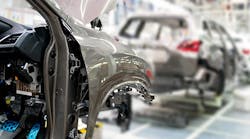Some phrases based on outdated technology still find use today, at least among the older segment of the population. One such phrase that comes to mind is “sounding like a broken record” — which stems from the tendency of a scratch in a phonograph record to cause repetition of a portion of the recording.
Yet, the phrase I keep repeating like a broken a record, “circular chemistry,” is very up-to-date. It’s an approach to manufacturing that’s focused on using renewable feedstocks and re-using end-of-life materials.
This issue’s cover story “Circular Chemistry Spins Faster,” highlights some significant moves now underway by chemical makers. Another article we recently published “The Future is Circular,” focuses on the essential elements of circular chemistry.
As our latest annual state-of-the-industry forecast “U.S. Chemical Industry Advances Amid Choppy Seas,” notes, the automotive industry represents a significant market for chemical products, particularly plastics — more than $3,000 per light vehicle. So, car makers can play a key role in advancing circular chemistry. A 56-page report released in October by the American Chemistry Council, Washington, D.C., “Transitioning Toward a Circular Economy for Automotive Plastics and Polymer Composites,” provides a good overview of the topic.
[pullquote]
It includes sections on the need for circular automotive plastics and polymer composites, the progress toward a circular economy, the path forward, and a call to action.
“The transition toward a circular economy for industrial goods will require the automotive industry and its suppliers to rethink the way that vehicles and their materials are designed, constructed, used, and handled at the end of life,” the report states. It notes that major automakers such as Ford, Toyota and BMW as well as original equipment makers (OEMs) like Goodyear, Bridgestone and Michelin have announced goals and initiatives related to circularity. It also cites legislation, particularly in Europe, to foster a circular economy.
While recycling efforts for cars — involving both dismantling and shredding — long have existed, the report cautions that the changing composition of parts and materials in vehicles will require the automotive recycling industry to adapt to remain economically viable. Effective partnerships among automotive recyclers, OEMs, materials producers and technology developers would help, the report counsels. Recyclers also would benefit from information sharing about the state of the art in vehicle and parts design, it adds.
The report also highlights efforts by automakers and plastics producers to use renewable feedstocks and repurpose end-of-life materials. It notes that a key element for successful reuse of wastes is effective materials separation and cleaning technologies, and gives a rundown on some promising developments.
Better design also is essential, emphasizes the report. This has several elements, including extended parts longevity, and easier disassembly, refurbishment/reuse and recycling.
Success demands not only development of advanced plastics recycling and recovery technologies, the report stresses, but also deployment of a robust and coordinated recycling infrastructure. It also requires exploring new business models that can support profitable circularity.
Anyone interested in the promise of this essential element of circular chemistry should find the report compelling reading.



